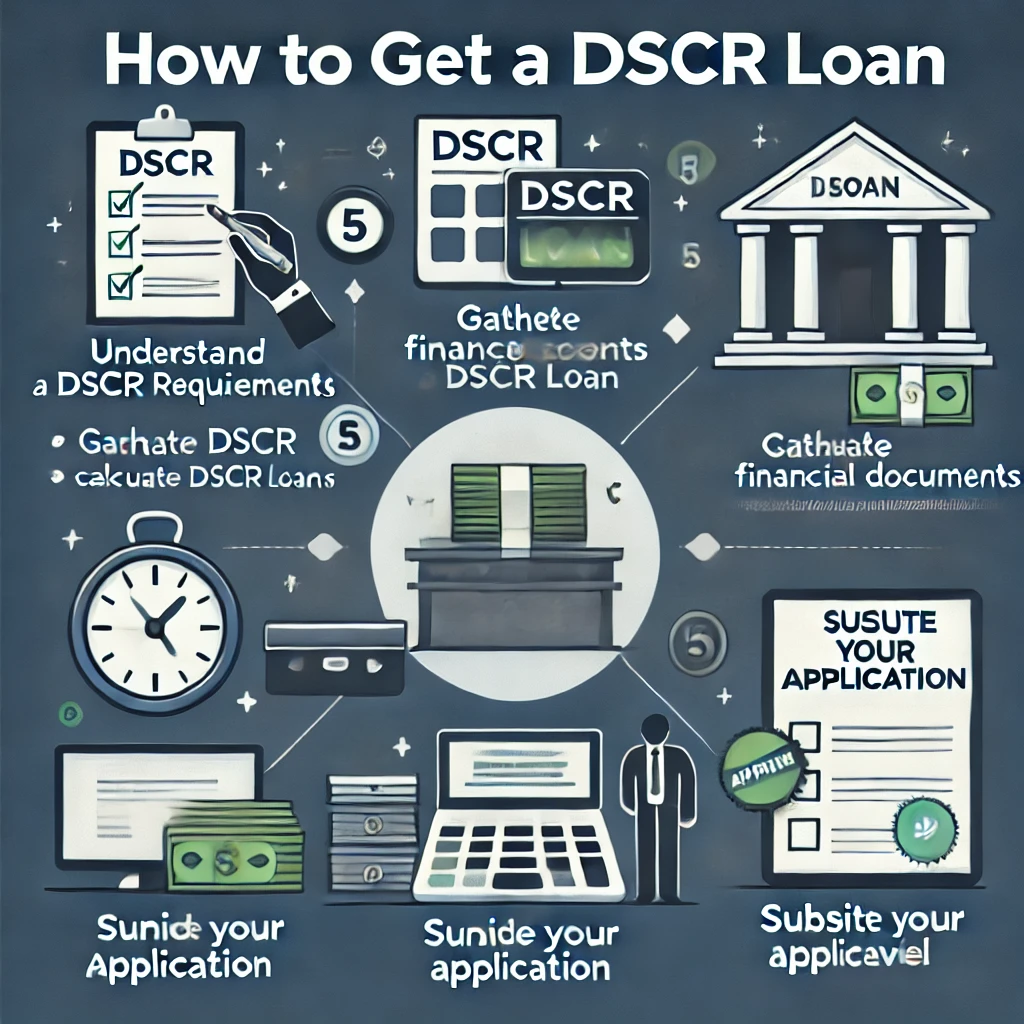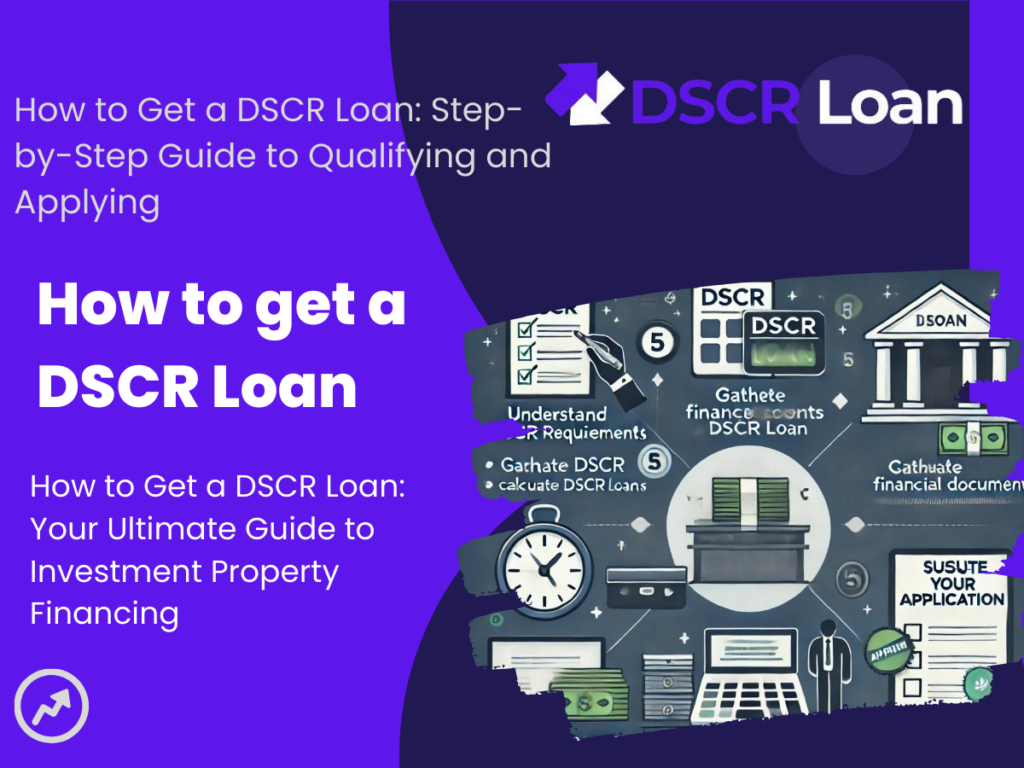How to Get a DSCR Loan: Your Ultimate Guide to Investment Property Financing
Have you ever dreamed of building a real estate empire but found yourself stumped by traditional mortgage requirements? Well, buckle up, because we’re about to dive into the world of DSCR loans – a game-changer for aspiring and seasoned property investors alike. In this comprehensive guide, we’ll walk you through everything you need to know about how to get a DSCR loan, from the basics to insider tips that could make all the difference in your application.
What Exactly is a DSCR Loan?
Before we jump into the nitty-gritty of how to get approved for a DSCR loan, let’s break down what it actually is. DSCR stands for Debt Service Coverage Ratio, and it’s a type of loan that’s music to many investors’ ears. Why? Because it focuses on the property’s income potential rather than your personal income. Imagine that – a loan that cares more about your property’s performance than your day job!
The DSCR Magic Formula
Here’s the secret sauce: DSCR = Net Operating Income / Total Debt Service
Lenders typically look for a DSCR of 1.25 or higher, meaning the property generates 25% more income than it needs to cover its debts. It’s like having a business that not only pays for itself but leaves a little extra in your pocket.
Why Choose a DSCR Loan?
You might be wondering, “How hard is it to get a DSCR loan compared to traditional financing?” Well, while it’s not exactly a walk in the park, DSCR loans can be a breath of fresh air for many investors. Here’s why:
- No personal income requirements
- Faster approval process
- Ability to finance multiple properties
- Perfect for self-employed individuals or those with complex income structures
Steps to Get Approved for a DSCR Loan

Now, let’s roll up our sleeves and get into the meat of how to get a DSCR loan. Follow these steps, and you’ll be well on your way to financing your next (or first) investment property.
1. Find the Right Property
Your journey begins with finding a property that’ll make lenders’ hearts sing. Look for:
- Properties in desirable locations
- Strong rental markets
- Buildings in good condition (unless you’re up for a project)
Remember, the property’s potential income is the star of the show here.
2. Crunch the Numbers
Before you even think about approaching a lender, you need to do some homework. Calculate:
- Potential rental income
- Operating expenses (taxes, insurance, maintenance, etc.)
- Estimated mortgage payments
Use these figures to determine your projected DSCR. If it’s above 1.25, you’re in good shape!
3. Boost Your Credit Score
While DSCR loans are more forgiving than traditional mortgages, your credit score still matters. Aim for a score of at least 640, but the higher, the better. Pay down debts, correct any errors on your credit report, and avoid opening new credit lines before applying.
4. Gather Your Documentation
Lenders may not care about your personal income, but they’ll still want to see some paperwork. Prepare:
- Property details and financials
- Bank statements
- Tax returns (usually for the past two years)
- Proof of down payment funds
Having these ready can speed up the approval process significantly.
5. Shop Around for Lenders
Not all DSCR loan providers are created equal. Some might offer better rates, while others might have more flexible terms. Don’t be shy about shopping around and comparing offers.
6. Make a Strong Down Payment
While we’ll discuss how to get a DSCR loan with no down payment later, most lenders prefer to see some skin in the game. A down payment of 20-25% is typical, but a larger down payment can improve your chances of approval and potentially snag you better terms.
7. Submit Your Application
With all your ducks in a row, it’s time to submit your application. Be thorough, honest, and prompt in responding to any additional requests from the lender.
Navigating DSCR Loan Challenges
Getting a DSCR loan isn’t always smooth sailing. Let’s address some common hurdles and how to overcome them.
Challenge 1: Low DSCR
If your property’s DSCR is borderline or below the required threshold, don’t panic. Consider:
- Increasing potential rental income (can you justify higher rents?)
- Reducing operating expenses
- Making property improvements to boost value and rental appeal
Challenge 2: Limited Cash Reserves
Lenders love to see healthy cash reserves. If you’re coming up short:
- Look for ways to boost your savings
- Consider partnering with other investors
- Explore seller financing options to reduce the needed loan amount
Challenge 3: Property Condition Issues
A property in poor condition can be a red flag for lenders. If you’re eyeing a fixer-upper:
- Get detailed renovation estimates
- Show lenders your improvement plans and how they’ll boost the property’s value and income potential
- Consider a renovation loan first, then refinance with a DSCR loan once improvements are complete
How to Get a DSCR Loan with No Down Payment
Ah, the holy grail of real estate investing – 100% financing. While it’s challenging, it’s not impossible to get a DSCR loan with no down payment. Here are some strategies:
- Cross-Collateralization: If you have significant equity in another property, you might be able to use it as collateral.
- Seller Financing: Convince the seller to act as the bank for a portion of the purchase price.
- Lease Options: Negotiate a lease with an option to buy, using the lease period to build up a down payment.
- Private Money Lenders: Some private lenders might be willing to finance 100% if the deal is strong enough.
Remember, these options often come with higher interest rates or other trade-offs. Weigh the costs carefully against the benefits of getting into the property with no money down.
DSCR Loans Around the Globe: How to Get a DSCR Loan UK Edition

For our friends across the pond wondering how to get a DSCR loan UK style, the process is similar but with a few key differences:
- In the UK, these are often called “BTL” (Buy-to-Let) mortgages
- Lenders typically use an “Interest Coverage Ratio” (ICR) instead of DSCR
- The rental income usually needs to cover 125-145% of the mortgage payment
- UK lenders may have stricter requirements for first-time landlords
Tips to Boost Your DSCR Loan Approval Odds
Want to really impress those lenders? Try these pro tips:
- Build a Strong Team: Having a reliable property manager, real estate agent, and accountant can make you look like a seasoned pro.
- Create a Detailed Business Plan: Show lenders you’ve thought through every aspect of your investment strategy.
- Start Small: If you’re new to real estate investing, consider starting with a single-family home or small multi-unit property.
- Demonstrate Market Knowledge: Research local rental markets thoroughly and be prepared to discuss trends and projections.
- Maintain Excellent Records: If you already own investment properties, keep meticulous financial records to show your track record.
The Future of DSCR Loans
As the real estate market evolves, so too will DSCR loans. Keep an eye out for:
- Increased use of AI and big data in loan underwriting
- More flexible terms for experienced investors
- Growing competition among lenders, potentially leading to better rates and terms
Read Also: DSCR Loan Qualifications: Expert Guide to Investment Property Financing
Conclusion
Securing a DSCR loan might seem daunting at first, but armed with the right knowledge and preparation, you’re well on your way to expanding your real estate portfolio. Remember, the key lies in finding the right property, crunching the numbers accurately, and presenting a compelling case to lenders. Whether you’re a seasoned investor or just starting out, DSCR loans offer a unique opportunity to finance your real estate ventures based on the merits of the property itself.
So, are you ready to take the plunge into the world of DSCR loans? With persistence, creativity, and a solid understanding of the process, you’ll be well-equipped to navigate the application process and secure the financing you need to grow your real estate empire. Happy investing!
Frequently Asked Questions
How long does it typically take to get approved for a DSCR loan?
The approval process for a DSCR loan is often faster than traditional mortgages, usually taking 2-4 weeks from application to closing. However, this can vary depending on the lender and the complexity of your application.
Can I use a DSCR loan for a property I plan to live in part-time?
DSCR loans are specifically designed for investment properties. While you might find some flexibility with certain lenders, generally, these loans are not intended for properties you plan to use as a primary residence or vacation home, even part-time.
What happens if my property’s income decreases after I get a DSCR loan?
While lenders focus on the property’s income at the time of approval, ongoing performance is crucial. If income decreases significantly, you might face challenges when it’s time to refinance. It’s important to maintain or improve the property’s income potential throughout the loan term.
Are there any restrictions on the types of properties eligible for DSCR loans?
Most DSCR loans are available for residential investment properties, including single-family homes, multi-unit properties, and sometimes small apartment buildings. Some lenders also offer DSCR loans for commercial properties, but terms and qualifications may differ.
Can I refinance my existing investment property mortgage into a DSCR loan?
Yes, many investors refinance traditional mortgages into DSCR loans to take advantage of the income-based qualification process. This can be particularly beneficial if your personal income has changed or if you want to free up your debt-to-income ratio to qualify for other loans.



